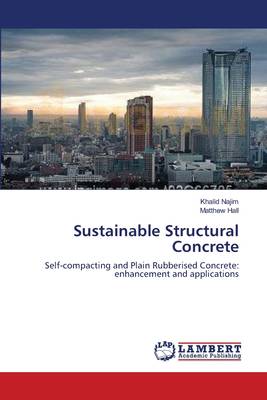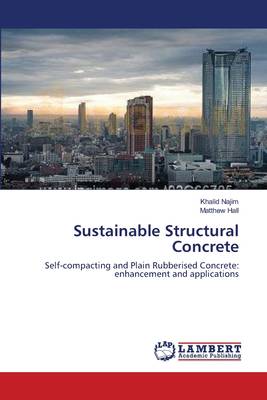
Je cadeautjes zeker op tijd in huis hebben voor de feestdagen? Kom langs in onze winkels en vind het perfecte geschenk!
- Afhalen na 1 uur in een winkel met voorraad
- Gratis thuislevering in België vanaf € 30
- Ruim aanbod met 7 miljoen producten
Je cadeautjes zeker op tijd in huis hebben voor de feestdagen? Kom langs in onze winkels en vind het perfecte geschenk!
- Afhalen na 1 uur in een winkel met voorraad
- Gratis thuislevering in België vanaf € 30
- Ruim aanbod met 7 miljoen producten
Zoeken
Sustainable Structural Concrete
Self-compacting and Plain Rubberised Concrete: enhancement and applications
Khalid Najim, Matthew Hall
Paperback | Engels
€ 98,45
+ 196 punten
Omschrijving
The work presented in this book aims are to i) understand and improve the bonding characteristics between crumb rubber and cement paste, and ii) scale-up the use of the material from lab to full-sized reinforced sections. Chapter One presents an introduction for this work while an extensive review of literature was summarised in Chapter Two . The methodology and the used materials were highlighted in Chapter Three. The experimental results of a parametric investigation that conducted to determine the effect of crumb rubber replacement on the fresh, mechanical and thermo-physical properties of PRC and SCRC at different w/c ratios was presented in Chapters Four and Five for PRC and SCRC respectively. In Chapter Six, the relative effects of different pre-coating/ treating methodologies were evaluated in terms of ITZ porosity, interfacial bonding, and mix air entrapment. The full-scale serviceability of steel-reinforced PRC and SCRC was experimentally measured and assessed in terms of mechanical structural behaviour, steel reinforcement bond-slip strength, and material durability including chloride ion diffusion and water penetration and the results were presented in Chapter Seven.
Specificaties
Betrokkenen
- Auteur(s):
- Uitgeverij:
Inhoud
- Aantal bladzijden:
- 300
- Taal:
- Engels
Eigenschappen
- Productcode (EAN):
- 9783659549199
- Verschijningsdatum:
- 6/06/2014
- Uitvoering:
- Paperback
- Afmetingen:
- 150 mm x 220 mm
- Gewicht:
- 440 g

Alleen bij Standaard Boekhandel
+ 196 punten op je klantenkaart van Standaard Boekhandel
Beoordelingen
We publiceren alleen reviews die voldoen aan de voorwaarden voor reviews. Bekijk onze voorwaarden voor reviews.









